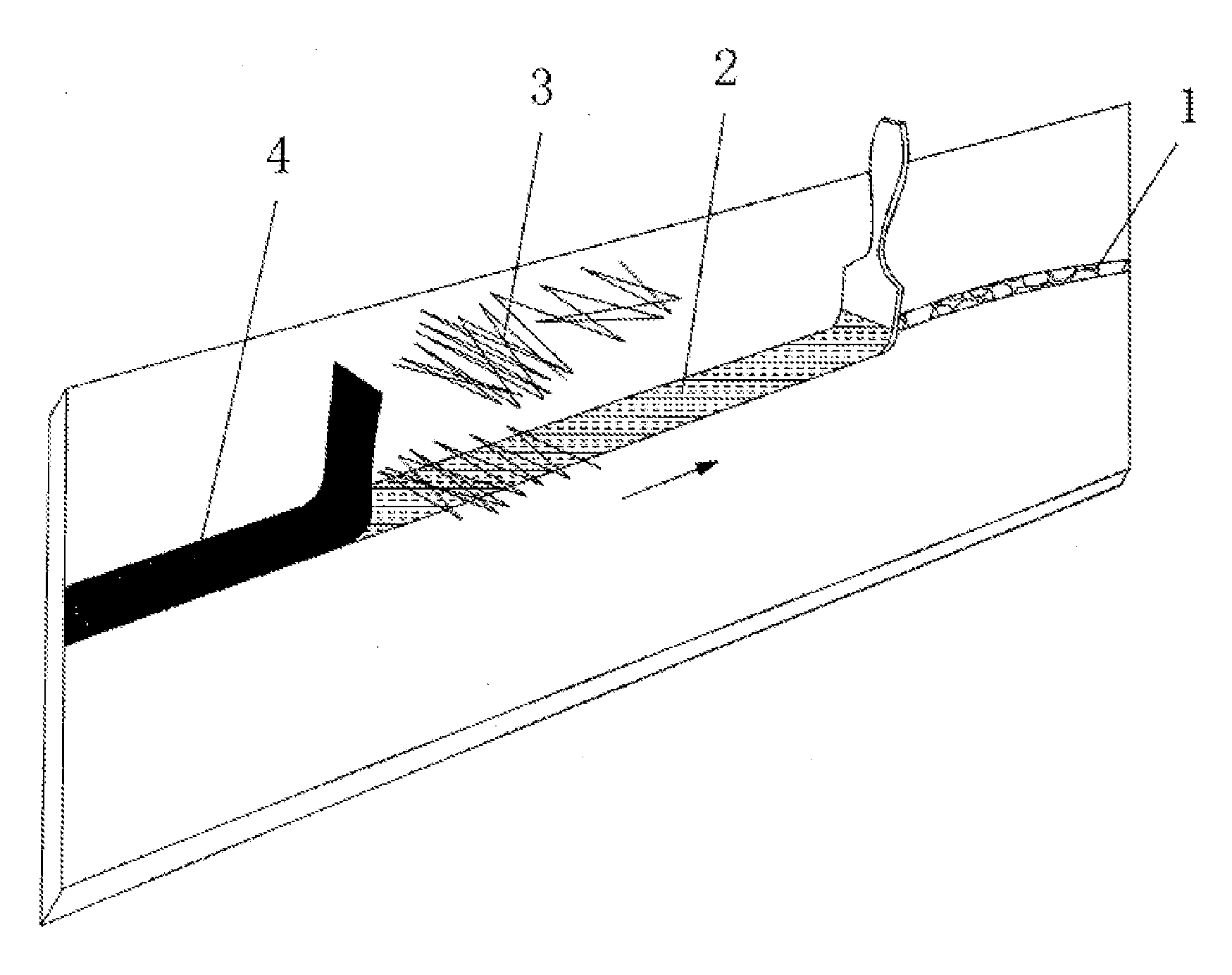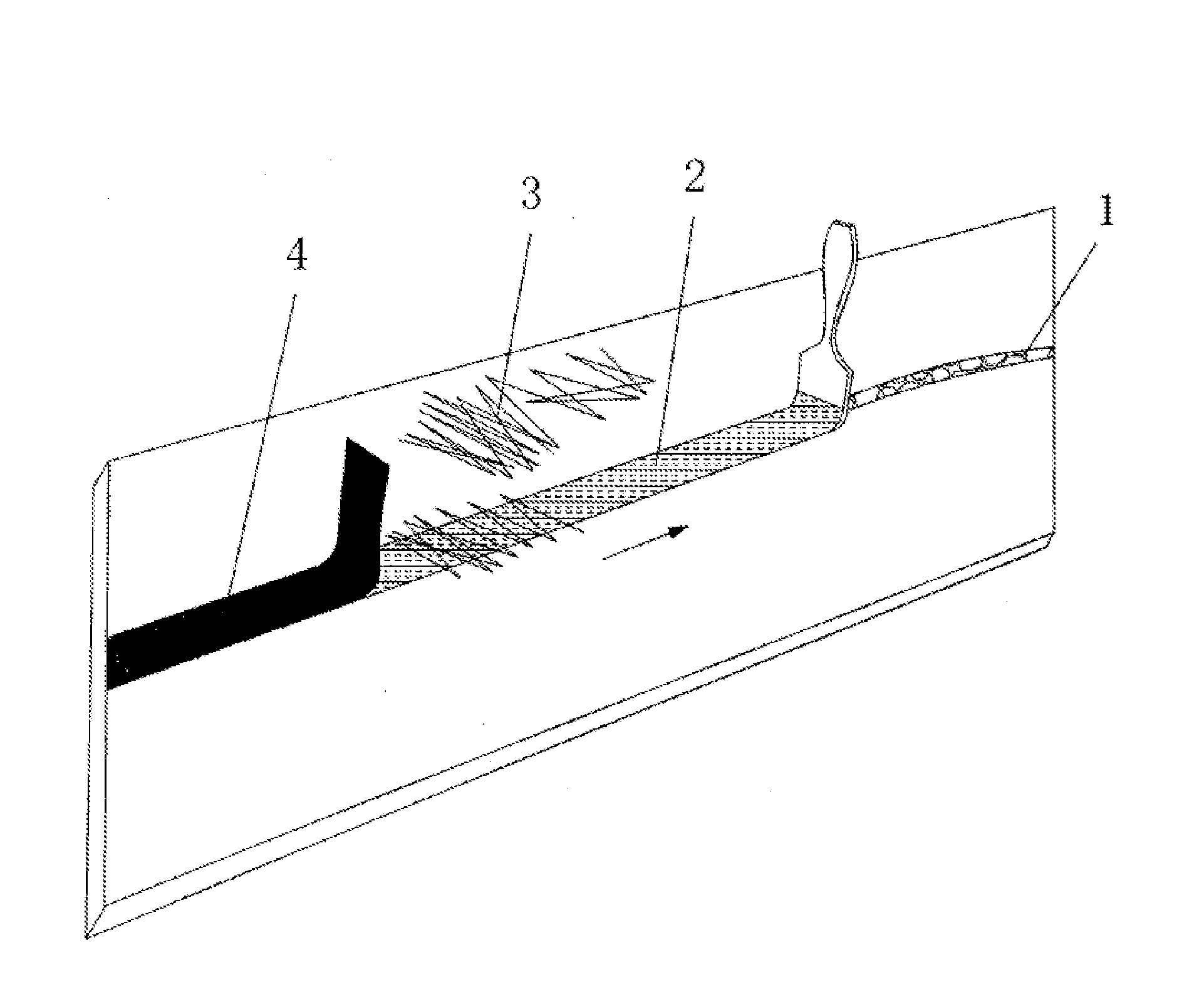Construction method for repairing cracks
a construction method and crack prevention technology, applied in the direction of construction, building repairs, roads, etc., can solve the problems of cracks on roads and bridges, shorten the life cycle of roads and bridges, and damage to roads and bridges more quickly under the pressure of fully loaded vehicles, so as to prevent cracks and prevent the separation of repairing materials
- Summary
- Abstract
- Description
- Claims
- Application Information
AI Technical Summary
Benefits of technology
Problems solved by technology
Method used
Image
Examples
examples
[0024]A construction method for sealingly repairing cracks on the road capable of preventing cracking and separation of the repairing material includes the following steps:[0025]a. coating a solvent capable of interfusing with asphalt and dust on cracks, which are around 1 cm wide, to improve the caking property between seal repairing materials and cracks; the solvent is a mixture of oil and water, such as mixture of diesel oil, water and emulsified bitumen.[0026]b. scattering high-intensity fibers, around 5 cm in dimensions of nylon textile fibers from the disposed tires, with suitable length and size on the crack surfaces, wherein longitudinal directions of most fibers are crossed with the trends of the cracks, and lapped with each other or form a reticular structure;[0027]c. pouring asphalt or macromolecule glue, such as bitumen 70 / 100 or SBS modified asphalt, into the cracks, or adhering strip repairing materials onto the cracks (wherein the fibers are bonded to the seal repairi...
PUM
| Property | Measurement | Unit |
|---|---|---|
| length | aaaaa | aaaaa |
| diameter | aaaaa | aaaaa |
| length | aaaaa | aaaaa |
Abstract
Description
Claims
Application Information
 Login to View More
Login to View More - R&D
- Intellectual Property
- Life Sciences
- Materials
- Tech Scout
- Unparalleled Data Quality
- Higher Quality Content
- 60% Fewer Hallucinations
Browse by: Latest US Patents, China's latest patents, Technical Efficacy Thesaurus, Application Domain, Technology Topic, Popular Technical Reports.
© 2025 PatSnap. All rights reserved.Legal|Privacy policy|Modern Slavery Act Transparency Statement|Sitemap|About US| Contact US: help@patsnap.com


